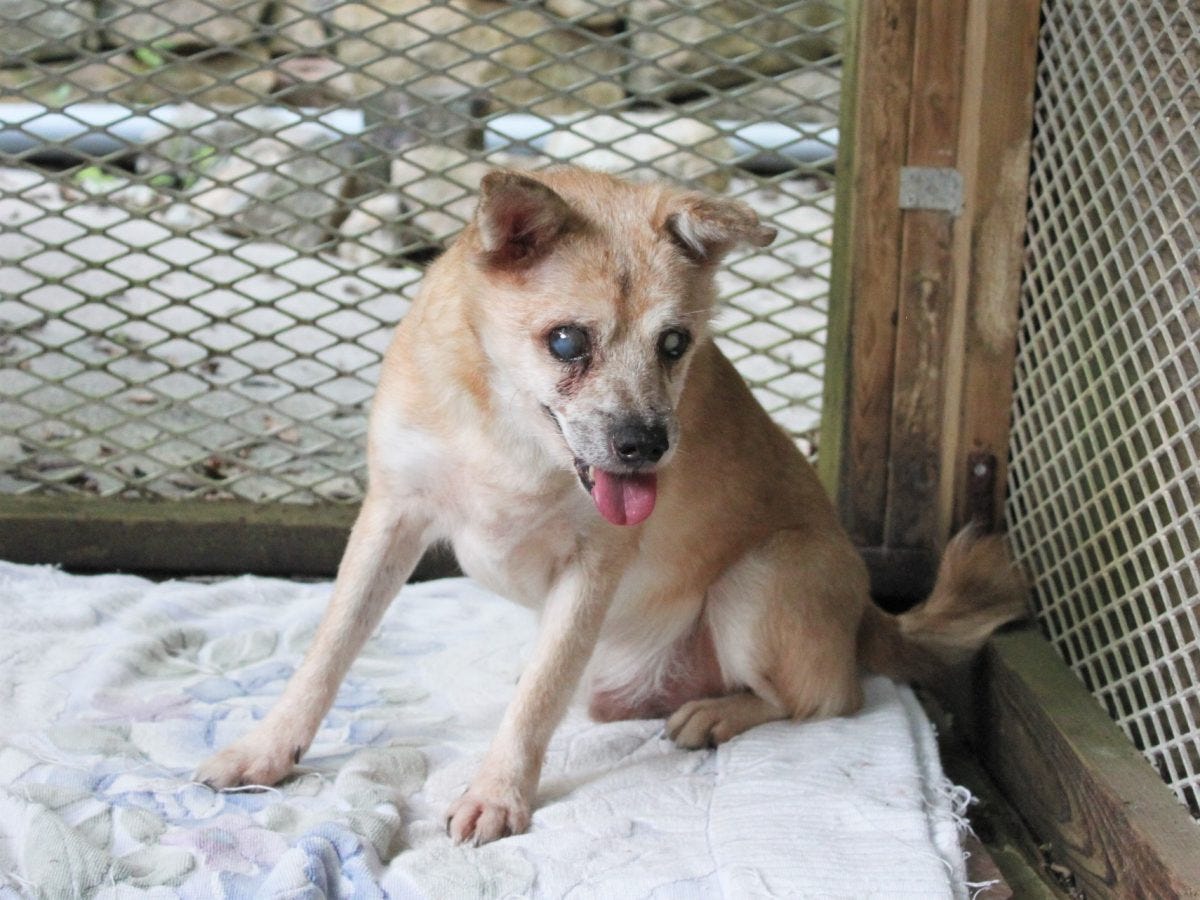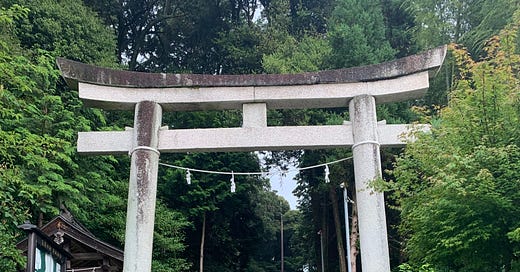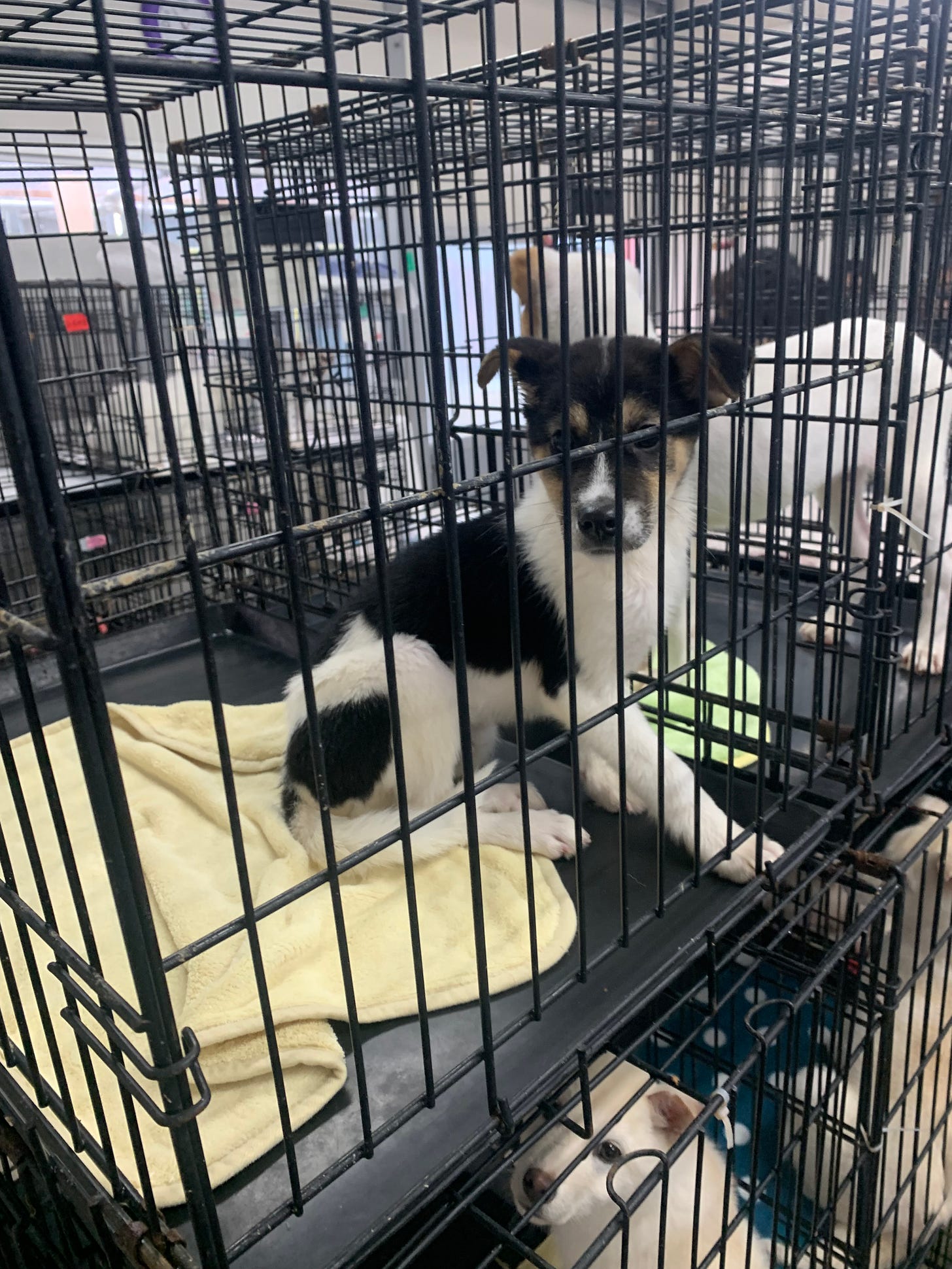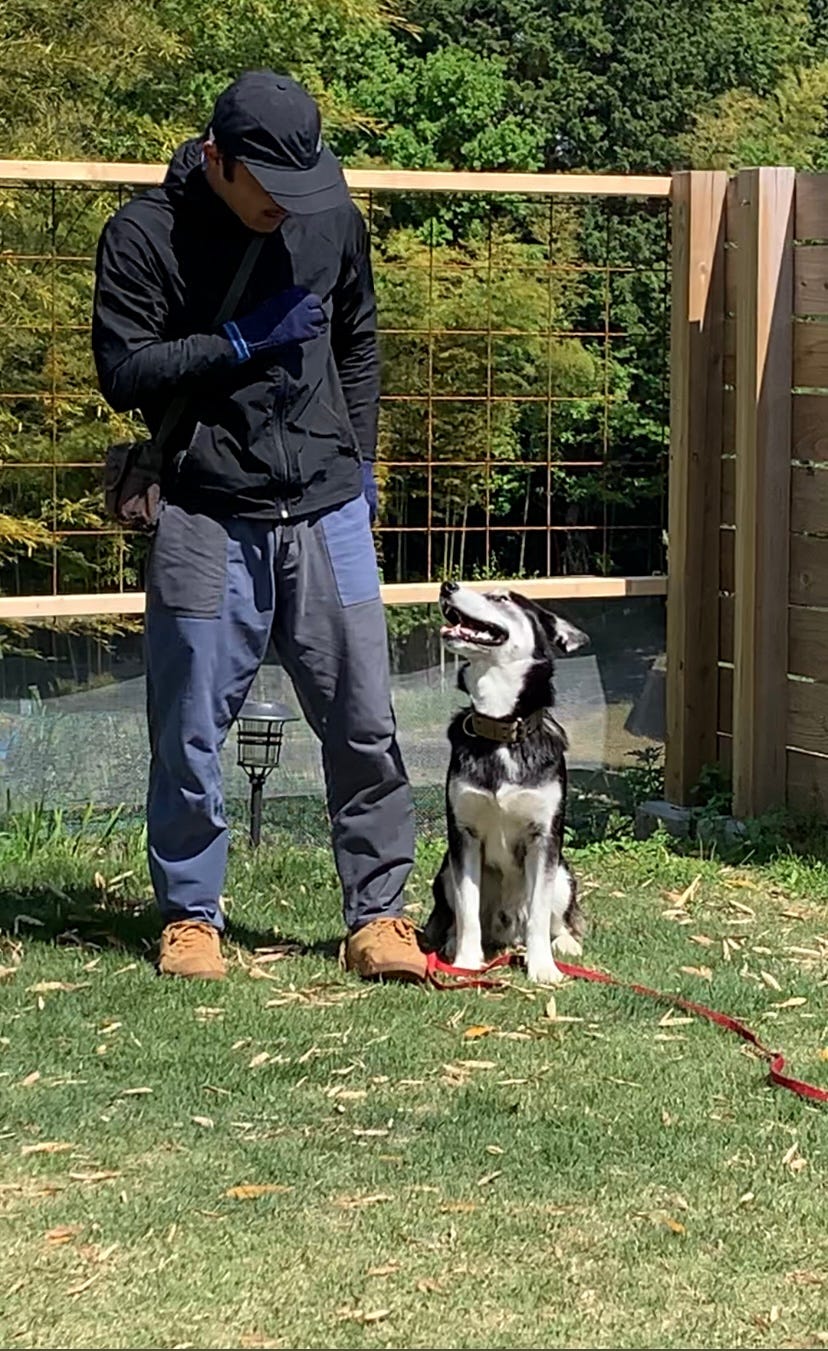The Hardships and Joys of Dog Ownership in Japan
Raising my Siberian Husky in my Adopted Country
OK so he’s not a wolf, he’s a Siberian husky. But basically the same thing right?
For decades I’ve also wanted to get a husky. After watching Dances With Wolves a thousand times the idea of the friendship between man and wolf was forever etched into my skull.
But I’ve been travelling the world from age 20-30 with no real address to speak of. So that meant no stability to raise a dog, or at least I believed so. But now I’m in my late 30’s, have a stable job, a house, and no more excuses not to go all in.
There have been incredible challenges and amazing blessings along the way. The following is my story, more so than a list of advice for how to raise a dog in Japan, but I hope you can still draw value from it.
To the Pet Shop or the Rescue?
I got my Nova at a pet shop. Curse me if you will but I don’t care, he’s alive because of that choice.
The reasons for said possible cursing is that Japanese pet stores suck. Walk into any one of them and you’ll see dogs and cats, sometimes even owls, kept in little glass boxes surrounded by annoying kids pounding and salivating all over the them.
Nova was in one of these boxes from 2 months to 5 months of age. He shit all over himself, peed on his bed, and had no interaction with other dogs. Well he had one level of interaction: all the dogs were fed from a common set of bowls in the back which helped him develop a strong habit of fighting for his food. A tiny scar on my left hand is testament to that.
One saving grace is that whenever people wanted to see him, he’d be taken out and washed and got to play with dozens of potential customers. So he did get socialized to humans that way.
Another factor that turns many away from pet shops is that they tend to rely on unethical breeders to supply them with fresh puppies. That could mean housing dozens of dogs in cages in small apartment and forcing them to give birth over and over again so long as pet shops are willing to buy them.
In these conditions many animals die from stress (15% of all puppies in Japan die en route to a pet store). Lots of others develop massive health problems due to shitty conditions and even inbreeding (its a fast way to make lots of puppies and therefore lots of cash).
A puppy should not be taken away from its mother until its is about 2 months old. That is fairly common wisdom. Many stores in Japan will accept puppies at the 4 week mark though. When I asked about my dog I was told he was received at the 2 month mark, and I have documentation to prove that. However, walk around any store and you will see extremely tiny puppies that could not be more than 4 weeks old.

Even if a puppy in a store isn’t purchased from one of these places, if that dog doesn’t sell within a few months while its small and cute, it will most likely be sent back to a breeder to make more babies OR it will be sent to an animal shelter.
Japanese animal shelters have a 80% kill ratio, compared to just 20% in the UK or 25% in the US. So if an animal isn’t sold within its allotted window at the store, it has only a 20% chance of survival through adoption, or 100% chance of survival as a sex slave in a cage basically.
If Pet Shops are Horrible, Why Did I Go that Route?
Nova was originally priced at ¥600,000 ! That’s more than my first K-car in Japan. But when I got him, he was 5 months old and “discounted” down to ¥150,000. When I saw that I knew his days were numbered, they were trying to get rid of him to make room for new merchandise.
I had visited him several times and felt a magnetic pull towards him. When I saw the lowered price I knew that time was ticking. I waited a few weeks and the price went down even further.
I visited a rescue as well. Tons and tons of dogs that people just tossed aside. I went to one in Takashima city, Shiga prefecture, called Angels (check out there website here if you’re interested). It would be easy to walk away with any dog or cat the same morning you visit. The dog is free to take, you only have to pay for their sterilization and vaccines (about ¥50,000).
The problem was that they only let people adopt on two select days a month. I was trying to time getting a dog with my winter vacation so I could be there watch it every day, and the rescue’s schedule just didn’t allow for that.
You also have to promise them that someone will be at home all day, with no absences longer than 2-3 hours max. And elderly people aren’t allowed to adopt in case they die before the animal does.
I highly recommended rescuing but it didn’t work for me logistically. Another good organization in Kansai (Osaka) is ARK. But I was already set on rescuing the little wolf guy from his glass box.
The Buying Process
Really straight forward. You pay your money and fill out a form, and have the shop lady read out the contract word for word. She handed it to me later and every line was highlighted, defeating the purpose for a highlighter.
The only promise I had to make was to not sue them if the dog died.
I also had to buy “love support” ラブサポート”. Basically if my dog died within the next few months this support would give me a massive discount on getting a new dog through them….
Then, magic, they hand you the dog, who was already fairly big and strong, and they promptly abandon you. I brought my own leash, but store never offered one. It was also located inside a mall, and I had to take a hyper active husky through the mall despite him not trusting me yet. The store gave no advice or help on how to do this.
I don’t necessarily blame the workers, every one of them looked exhausted watching over and handing off dozens of animals a day. Its a problem of the system. Sell as many animals as possible over quality care of each one.
An example of this was with the food they gave me to start him off. I was a new fur baby parent so I had no idea about anything and trusted their sage advice fully. So I never examined the food they handed to me that was supposed to last Nova a month.
It was only a week later that I stopped to read the Japanese label that said: food for small dogs. My dog is a medium-large sized one. Also I was supposed to give him a milk powder mixed into his food that I boiled to mush very day.
I reflected on this, he’s already 5 months old, does he need milk and soft food anymore. After scrolling the web for hours I decided that no, he’s way beyond the baby stage, so lets stop that nonsense.
I called the pet shop about it to confirm and complain. they immediately admitted to me that “yeah he doesn’t need small dog food or milk.”
Me: “Then why did you give it to me?”
Shop girl: “Because its a part of our package deal we give to all our customers.”
Me: “Even if its not what that specific dog needs.”
Shop girl: “I am very sorry but yes that’s right.”
Training: Blood, Sweat and Tears. Literally.
Nova had lots to give. His name is taken from super-”nova” to describe the intensity of his energy and his love.
And he exploded into fiery star-fall from day one. There was a lot of good: he loved to play, loved to cuddle, was super curious.
But he had a lot of issues as well:
He couldn’t walk in straight lines for 2 weeks. All his time in the pet shop box he would just go in circles, and that habit continued.
He drew blood daily. He had no idea about bite force regulation.
He had no boundaries. Jumping, biting, knocking us over.
Poo’d and peed in the house at least 7 times a day.
Went crazy on the leash whenever he saw another dog….fine when he was 5 months and small, an absolute nightmare when he turned 9 months and had some muscle.
I called in a professional trainer. I thought I could handle him by myself and with YouTube as my guide.
Nope.
I got extremely lucky with the guy I called. Most trainers I looked at in the region (Shiga and Kyoto) said amazing things like “give your dog to us for 3 months and we promise he’ll be able to sit, stay, and come when you call!”
Are you joking me? I taught him all of that in a few weeks.
The problems I had were not that he couldn’t understand “sit”, they much more deeply rooted than that.
The guy I called, Mr. S-, was a former police dog trainer. He not only is a full time trainer now but still drops in the station to help new guys train difficult German Shepherds. He also takes police dogs into the mountains looking for lost elderly hikers every once in awhile.
This guy is legit.
Very nice, straightforward, good looking guy. Never did small talk. Never gave me the “what country you from?” or “how your Japanese is so good.” He did talk a lot, about my dog and what to do for him.
He was all about my dog, and my dog was all about him. He had some kind of magic gravitas about him that I couldn’t understand. Nova just fell in love, and by falling love listened to everything he said.
After a few months Mr. S- visiting, he kicked up the strict factor of the training. I hated it at first. Things like leash pops or dominating my dog when he got of line. But you know what? It worked.
I used to be all about positive only training, where you ignore bad behavior and just focus on rewarding good behavior. If there are punishments, they only go so far as removing attention from the dog.
Nova didn’t give a shit about that. No treat kept him from lunging at another dog, wrapping the leash around my ankle and shaving off all the skin there….it was a big bloody mess that took weeks to heal.
No ignoring bad behavior stopped him from spraining my wife’s fingers, or got him to stop latching onto her hand and rag dolling her.
Mr. S- combined fun, love, games and strict leadership to train him. And now I can confidently say that he is perfect…mostly….but the fact that my wife and I can relax on the couch and not worry about getting a bloody nose means perfect enough.
Do Japanese People Know How to Approach a Dog in Public?
Ok so I don’t mean “all Japanese people” here. 90% of people have been OK. The other 10% are going to get hurt someday.
When my dog was reactive, growling and jumping, this couple approached with their little toddler. I told them to not get close because my dog is too excited and might (read: definitely will) push the little girl over. They kept smiling and coming closer, maybe not hearing my Japanese because of my foreign face. They could at least read the dog!
Or the time I was at a corner with Nova, and a group of highschool girls materialize to my left. Without saying anything bam!, this girl is within striking distance of my dog’s teeth ready to pet him.
I told her “its ok for you to pet him, but you should NEVER approach someone’s dog without asking first.”
Or the dad out with his kid who started sprinting towards Nova without any care. Another adult I had to get angry at and tell off for not only almost getting his kid hurt, but putting my dog in a positions that’s overwhelming for him.
Not everyone gets close. Lots of elderly people look at him like he’s a beast from hell. He does look like a wolf so I get it, but I’ve had grandmas almost run to other side of the street to avoid him.
About 5 different mail men or repair guys have all asked if he bites.
This one woman in the area picks up her poodle and shields her when we walk by. And with all these examples Nova has been perfectly calm and obedient.
There are a few people that get it though. I see other husky or mastiff owners around. Most of them have a strong handle on their dogs. Except this one guy who let his giant mastiff, bulging muscles everywhere, drag him down the street and try to fight my dog. Now was my turn to pick up my dog and run away.
The Best Guy
So its been a challenging road. I never mentioned 1,000s of other things that are important.
Summer in Japan is incredibly hot. My dog is from the tundra. So our AC is on 24/7.
Dog parks are best avoided, lots of untrained and aggressive dogs. Or, so small that my dog bullies them.
Unemployed housewives make for great pet sitters.
Whenever a stranger meets him they always yell in scrambled English for him to sit, despite the fact that all his command are in Japanese.
He’s great all in all. Absolutely worth it. But also incredibly challenging. If you are wanting a dog in your life here in Japan, I can say that they will be an unfathomable source of joy.
But that decision needs to be taken with the understanding of what it takes to raise a dog in general, even more so what it means to raise a dog in Japan.







I'd already read a few articles and essays about dog ownership in Japan, but I still learned a lot here, especially in the first part about breeding and selling. A very good story!